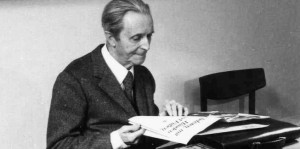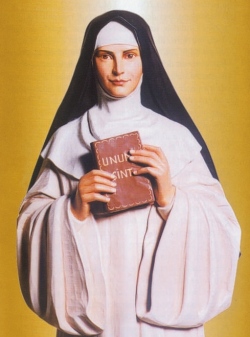
For his part Giordani had followed this week of Prayer for Christian Unity since 1940, which to be more precise is actually an Octave: from January 18th to 25th each year. He explains this himself in a paper he wrote that year, where among other things he explains the significance of the two dates: the feast of the Chair of St. Peter’s in Rome, the first, and the conversion of St. Paul, the second.
“The practice of the Octave for unity, because it gathers millions of Christians at the feet of the one Father to make him one, choral demand, to make everyone one again, is itself a beginning of this unity, as well as a start in the right direction.
During the preparation of the Octave this year, news had spread, to begin with a little vague, that in a Trappist monastery of nuns in Rome, they were praying with particular intensity, for the termination of the divisions among Christians, whose image – which is the image of Christ bleeding – should not let us rest.

I came to know that, in that Trappist monastery, a humble nun, Maria Gabriella, had offered herself her life for the unity of the Church and that her sacrifice had deeply affected a community of separated brothers in England.
The news, even though vague, widened immensely – to my eyes at least – the horizon of the movement for unity and opened new perspectives, in which, like a strip of blue between the cracks of a storm, showed the face of the sky above a quarrelsome humanity. It put, in short, in its true light the Octave and its aims.
Now these nuns probably knew nothing of all those debates and commissions and committees: and in any case – no matter how great the merits of those international conferences were – they did not think it had anything to do with them. Confronted with the problem of the division, they had contemplated with simplicity, by the light of the Rule, which never changes: that is, they saw that unity has to be sought where it is to be found: at the source, at the matrix: it had in other words, to be asked of the Father, in whom – as we had been taught with the parable of the prodigal son – and only in whom brothers and sisters can be unified.
This means that these humble creatures, who we will never meet in any congress, had seen immediately what to do and had put the movement for unity back on the straight road. […]
Unity is not the work of men and women but of God: not of study, but of grace. Accept, Father, these pure offerings, first of all for your Church, that you might deign to purify it, guard it and unify it ….”
From “The ecumenical journey of Igino Giordani” by Tommaso Sorgi – excerpt from Nuova Umanita, n. 199 – January / February 2012.

